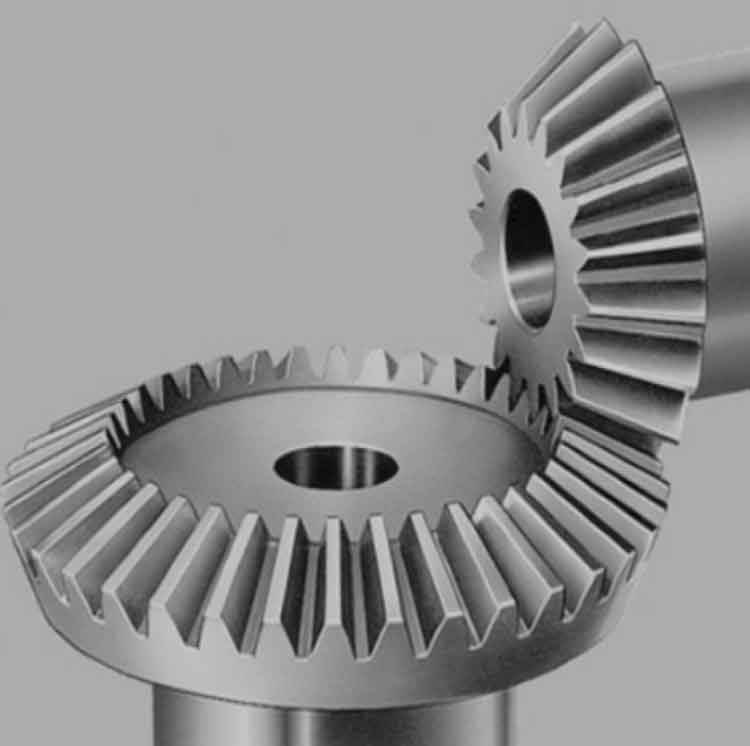
Efficiency and noise are two critical considerations in straight bevel gear drives. Engineers aim to design gear systems that achieve high efficiency in power transmission while minimizing noise levels to ensure optimal performance and user comfort. Here’s how efficiency and noise are influenced in straight bevel gear drives:
Efficiency:
Efficiency in straight bevel gear drives refers to the ratio of the output power to the input power, taking into account power losses due to friction, heat, and other factors. Achieving high efficiency in gear drives is essential to reduce energy consumption and maximize the system’s performance. Several factors affect the efficiency of straight bevel gear drives:
1. Tooth Profile Design: Optimizing the tooth profile design can reduce friction and ensure smooth gear meshing, improving efficiency. Curved or modified tooth profiles may be used to enhance tooth engagement and minimize power losses.
2. Surface Finish and Lubrication: Proper surface finish and lubrication of gear teeth are crucial to reduce frictional losses. High-quality lubricants and suitable lubrication methods help minimize wear and improve gear efficiency.
3. Material Selection and Heat Treatment: Choosing the right gear materials and applying appropriate heat treatment can enhance the gear’s strength and wear resistance, leading to higher efficiency and durability.
4. Bearing Selection: Efficient and properly selected bearings reduce friction losses and contribute to overall system efficiency.
5. Gear Misalignment: Misalignment between gears can lead to increased power losses due to additional friction and wear. Proper gear alignment is essential to maintain high efficiency.
Noise Considerations:
Noise in gear drives is primarily caused by the impact and vibrations during gear meshing. Reducing noise levels is crucial for applications where quiet operation is essential or to prevent discomfort to operators and users. Some factors affecting noise in straight bevel gear drives include:
1. Tooth Profile Design: Optimizing tooth profiles can lead to smoother tooth engagement, reducing impact forces and noise during gear meshing.
2. Backlash Control: Managing backlash helps minimize the clearance between gear teeth during meshing, reducing the impact and noise.
3. Surface Finish and Lubrication: Proper lubrication and surface finish reduce friction and vibrations, leading to quieter operation.
4. Gear Quality and Precision Manufacturing: Higher gear quality achieved through precision manufacturing processes helps minimize noise levels.
5. Helical Gears vs. Straight Bevel Gears: Compared to straight bevel gears, helical gears are generally quieter due to their gradual tooth engagement, making them more suitable for noise-sensitive applications.
6. Noise Enclosures and Damping: In certain applications, noise enclosures or damping materials may be used to reduce the noise transmitted to the surroundings.
Balancing efficiency and noise considerations is essential for designing straight bevel gear drives that meet specific application requirements. Engineers must carefully analyze the operating conditions, load requirements, and user expectations to strike the right balance between efficiency and noise levels for optimal gear drive performance.
